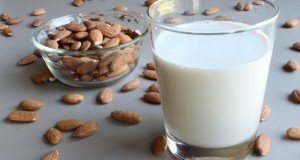Deceptive advertising lawsuit: Almond milk missing the almonds
(NaturalHealth365) A class action lawsuit filed in New York back in May of 2015 has brought alarming news to almond milk lovers. It turns out the name “almond milk” in many cases is actually a misnomer, since many so-called almond milk products on the market contain as little as just 2 percent actual almond milk, according to the suit.
Dimitrios Malaxianis and Tracy Albert are suing Blue Diamond Growers, the largest almond processor and marketer in operation at this time. The civil suit claims that Blue Diamond’s Almond Breeze almond milk product has been fraudulently advertised and given the illusion that it contains a substantial amount of almond milk, when this is far from the case.
Store-bought almond milk is NOT what it seems
Malaxianis and Albert learned about the low almond milk percentage by looking at a similar UK product, which discloses the truth about the low almond milk percentage. The U.S. version of the product does not make this information readily available to the public. The lawsuit is addressing the fact that a false perception is being created about their almond milk, which has barely any almond product in it.
Almond milk is very popular at this time, with consumers adding it to coffee drinks and smoothies as well as drinking it straight. This means a great number of people who use the Blue Diamond product are being deceived about what they are actually drinking.
Most health experts suggest that true almond milk should contain at least 25 to 35 percent almond milk, with the rest clean, filtered water. Commercially-produced almond milk is primarily made of sugar water. In addition, it can contain calcium carbonate, carrageenan, sodium and may be artificially fortified with various minerals and vitamins.
The best Almond milk can be made right at home
Many are becoming fed up with the lack of quality and nutrition in almond milk and are coming to the decision that the best almond milk is made from scratch. It’s not difficult to make your own almond milk; simply blend one part almonds (presoaked) and three to four parts filtered water in a blender. Once well-blended, strain the mixture and serve. If a sweeter milk is desired, a few drops of stevia can be added. A bit of sea salt can also enhance the taste. Store excess almond milk in a jar or glass pitcher.
This story is yet another warning to consumers to be vigilant about even the healthiest-sounding products sold in stores. The best almond milk can be incredibly good for you, but only if the ‘milk’ is really coming from almonds – without all the added water and unwanted sugar or additives.
Ultimately, your best bet is to make your own almond milk from organic almond and a clean (pure) water source. The effort is worth the rewards.
Editor’s note: My personal supplier of almonds is LivingNutz. They sell the best almonds plus many delicious snacks! We, at NaturalHealth365, receive no financial compensation for this endorsement – we just believe in their company values and the quality of their truly organic almonds and snacks.
Click here to shop LivingNutz today.
References:
https://www.medicaldaily.com/almond-breeze-faces-false-advertising-lawsuit-claiming-its-milk-only-has-2-real-344294
https://www.yahoo.com/food/turns-out-almond-milk-has-no-almonds-in-it-125200270086.html
https://www.foodnavigator-usa.com/Regulation/No-injunctive-relief-in-almond-milk-lawsuit-vs-WhiteWave-Blue-Diamond











